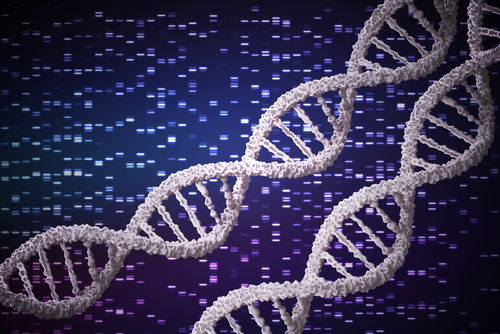Gene Activity May Regulate Body Fat Deposits in Obese Black Women, Study Suggests

The activity of four genes – specifically HOXA5, DMRT2, DMRT3 and CSN1S1 – may regulate body fat distribution in black South African women with obesity, a small study suggests.
The findings also showed that a three-month exercise program led to substantial gene activity changes in both gluteal (buttocks) and abdominal fat.
Titled “Distinct abdominal and gluteal adipose tissue transcriptome signatures are altered by exercise training in African women with obesity,” the study was published in the journal Scientific Reports.
The accumulation of local deposits of fat, such as in the belly and buttocks areas, is regulated by both environmental and genetic factors, according to studies performed in European populations. Whether similar genetic factors also play a role in local fat accumulation in African populations remains unknown.
Notably, obesity is a rising public health concern worldwide, including among people from sub-Saharan Africa. In particular, South African women have the highest prevalence of obesity in the region. Moreover, their gluteal fat has higher activity of genes implicated in inflammation than that of European women, suggesting different metabolism.
Now, researchers in South Africa analyzed gene activity in the abdominal and gluteal subcutaneous (under-the-skin) fat of 12 Black women, with an average age of 23 and a body mass index (BMI) of 33.8 kg/m². In addition, they assessed the impact of a 12-week (three months) aerobic and resistance training program on gene activity and body fat distribution.
All of the participants were obese, with a mean waist circumference of 102 cm, and carried significantly more subcutaneous than visceral fat. They were selected from a group of 20 women taking part in a parent study due to achieving the greatest reduction in body weight in response to exercise, as well as sample availability.
The supervised training program progressed from 40 minutes to one hour, four days per week. Cardiovascular exercises included aerobic dance, running, skipping, and stepping performed at a moderate-vigorous intensity. The women were instructed to maintain their usual dietary intake throughout the intervention period.
At the start of the study (baseline), only 15 genes significantly differed between abdominal and gluteal fat, with 13 genes showing a significantly higher activity in abdominal fat. The 15 genes were mainly associated with embryonic development and the organization of anatomical structures.
After the training program, the number of genes with significantly different activity comparing the two local depots of fat increased from 15 to 318. Specifically, 166 had higher activity in abdominal fat and 152 had lower activity in abdominal fat. The 152 genes also had greater activity in gluteal fat.
The team then found that, within abdominal fat, 77 genes changed in response to exercise, with 55 genes increasing activity and 22 genes decreasing. These genes were mostly associated with muscle-associated processes and immune response.
In gluteal fat, 61 genes were significantly different after exercise, most (54) showing higher activity. They primarily regulated immune and inflammatory responses, fat metabolism, and the levels of blood proteins.
Overall, this study suggests that differential gene activity also is found in gluteal and abdominal fat depots in African women with obesity.
Moreover, “we identified four genes (CSN1S1, DMRT2, DMRT3 and HOXA5) as novel candidate genes of body fat distribution pattern in Africans, whose biological function and implication in the pathogenesis [development] of obesity-associated metabolic diseases remain to be unravelled,” the scientists concluded.




